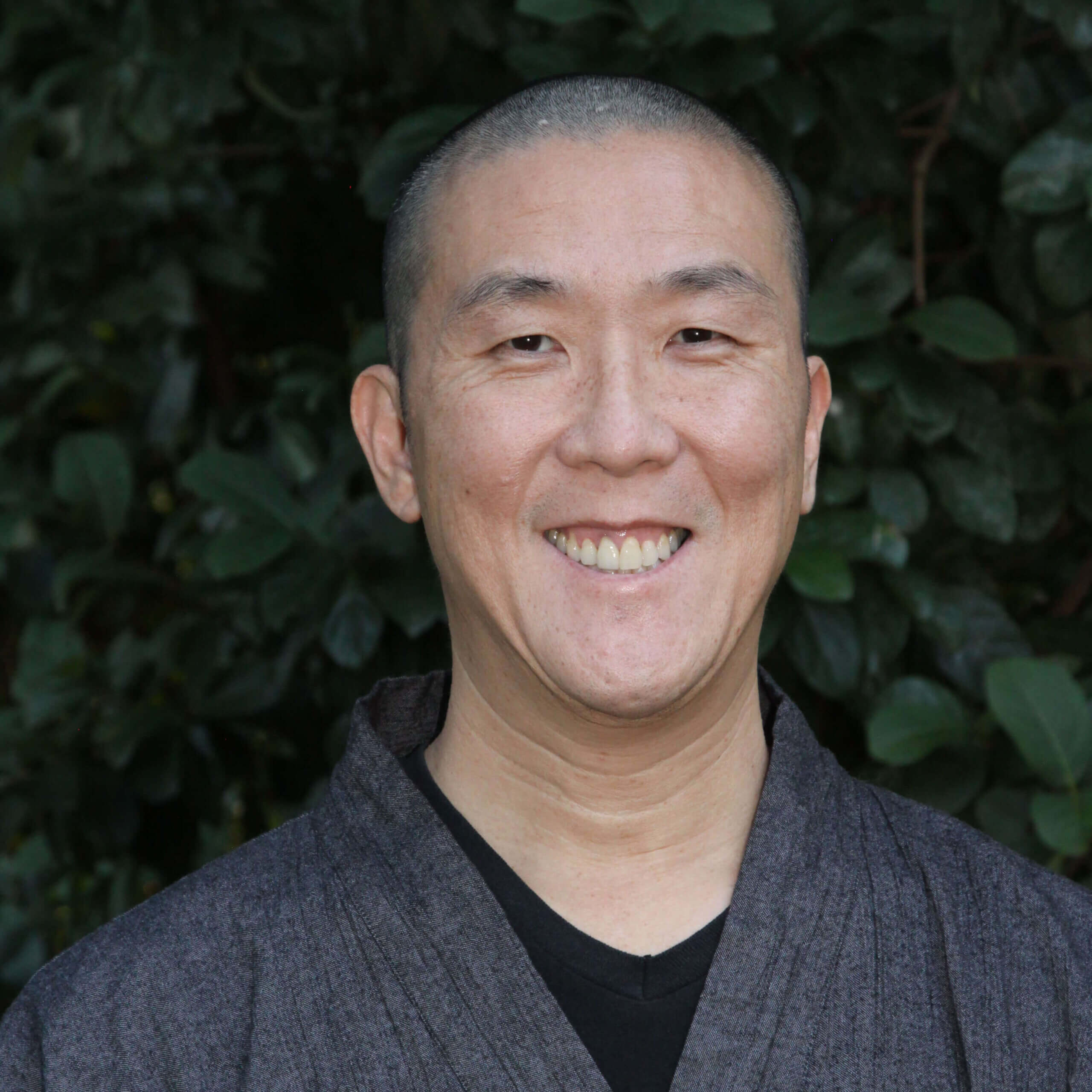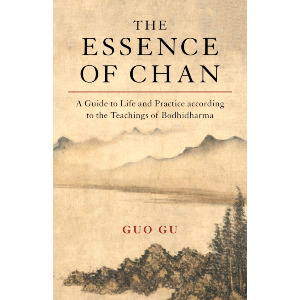An excerpt from Silent Illumination
Natural awakening is inherent within everyone—it is not something produced through practice. Hongzhi eloquently described it as the “vacant and open field,” the “lucid lake,” our “original home.” The point of Chan practice, then, is to regain our original freedom by clearing away our emotional afflictions and negative habitual patterns (i.e., craving, aversion, and ignorance and our tendency to perpetuate them), the accumulation of which have concealed who we are:
It [silent illumination] cannot be practiced nor actualized because it is something intrinsically full and complete. Others cannot defile it; it is thoroughly pure to its depth. Precisely at the place where purity is full and complete is where you must open your eyes and recognize it. When illumination is thorough, [self] is relinquished completely— when experiencing is clear, your steps are then solid and grounded.
Elsewhere he states:
The correct way of practice is to simply sit in stillness and silently investigate; deep down one reaches a state where externally one is no longer swayed by causes and conditions. The mind being empty, it is all-embracing; its luminosity being wondrous, it is precisely apt and impartial.
Chan practice is about investigating our intrinsic awakened nature. It requires us to remove the obscurations—self-attachment and all of its emotional afflictions and negative habitual patterns—that conceal our inherent freedom so we can express it in the midst of daily life.
The transliteration of the Chinese characters Hongzhi used for “investigation” are jiu and can. Both have the meaning of “partaking,” “integrating,” and “thoroughly penetrating.” Sometimes he combined the word investigation with the term ti, which means “embodiment” or “experiencing.” For Hongzhi, investigation is not an intellectual process but embodied, actualized, and lived experiencing. Thus, while silent illumination as our original awakened nature “is something intrinsically full and complete,” we must personally recognize and live it.
“Silence” is the metaphor for the wisdom of emptiness. So are quiescence, formlessness, spaciousness, stillness. These are all Hongzhi’s poetic terms for the Mahayana teaching of selflessness. “Illumination” refers to the wondrous activity of this selfless wisdom that, in Buddhism, is none other than compassion. Just as wisdom and compassion are inseparable, so are silence and illumination. They are simply two aspects of our natural awakened buddha-nature within.
Chan teaches that we are already free—we are buddhas.
At the same time, we’re bogged down by delusion, emotional afflictions, and negative habitual patterns, so we don’t realize our freedom. An analogy for this is the room that you occupy right now. The room—its spaciousness—cannot be defined by the furniture contained in it or the presence or absence of people. Nor is the nature of the room affected by its level of cleanliness. Similarly, our buddha-nature is not defined by the presence or absence of our emotional afflictions. Like the spacious room, buddha-nature has always been empty, free of disturbance. At the same time, buddha-nature is not a thing apart from emotional afflictions. It is through the vexations of our lives that we realize freedom. By working with our thoughts, feelings, and mental states, we come to realize that we are the dynamic expression of buddha-nature.
The spaciousness or emptiness of the room is the “silence” in silent illumination. The ability of the room to accommodate all sorts of furniture is the “illumination” of silent illumination. Our true mind has no delineating borders, and it has infinite potential; we have the ability to respond to the needs of all beings creatively, immeasurably. Just as space is not the result of our moving the furniture around the room, awakening is not something that we gain from our efforts in “practice.” If awakening were gained from practice, then it would be just an additional piece of furniture! Whatever can be gained is also subject to loss. Our buddha-nature has nothing to do with having or lacking, gaining or losing.
Yet, by working with the furniture—fixing the dilapidated pieces, recycling the old ones, and clearing up the clutter—it’s more likely that we’ll recognize the spaciousness of the room.
The pieces of furniture in our heart-mind are all the ever-changing constructs, narratives, knowledge, and personal experiences. For the purpose of this book, I will use “mind” or “heart-mind” to refer to the workings of our whole being. While our modern sensibilities tell us that body and mind are separate—that there are distinct functions of heart, brain, and mind—in Chan usage, all of these functions are interconnected, synonymous. As for the furniture there is a vitality to their transiency, where nothing is fixed and everything is possible. Furniture can be rearranged and recycled endlessly. We may take a particular piece of furniture as who we are, but there really is no permanent “me” apart from our mental construct of it. There is no self that experiences; there’s just moment-to-moment experiencing. The problem is really not with the furniture but with our rigid fixation on it. We are attached to all the things we experience and have allowed them to define, shape, and manipulate us.
When we fully appreciate the natural expression of mind as experiencing, all things become alive, fluid, intimately connected to one another. This is the realization of no-self or selflessness. The true nature of our mind is free. This freedom is also our true nature. Thoughts and passing emotions liberate themselves, moment after moment after moment. We don’t have to do anything to make them disappear. They liberate themselves if we let go of what we’re grasping.
Our true nature has infinite potential.
It is able to respond to circumstances and the needs of all beings. Expressed as the natural functioning of the mind, our experiencing is both empty and aware. It is able to respond in any and all ways, freely and dynamically, adapting and accommodating to all conditions with effortless flexibility. Just as our eyes see and ears hear—because that is their inherent function—buddha-nature simply experiences, moment to moment, because this is its inherent function.
When we are aligned with our buddha-nature, we are like a mirror selflessly reflecting images before it. We respond to complex situations and interact with others effortlessly, and the reason we can function perfectly well without a fixed, rigid sense of self or “experiencer” is because, in reality, there is no such thing and there never was. Self as a permanent entity doesn’t exist. In our confusion, we think that the objects of our minds—thoughts and feelings—arise from the “I” that is the subject standing in opposition to the rest of the world.
Our attachment to a fixed sense of I is unnecessary. We can actually function better without it, adapting to changes when faced with obstacles. But when we fixate on this sense of me, I, and mine and inject it into our daily interactions with others, we hinder the natural expression of our buddha-nature as experiencing and cause suffering for ourselves and others. Why? Because it’s contrary to how we actually are: free and open, wondrously changing and with great potential. To understand silent illumination is to appreciate our true nature as already free—the natural awakening of who we are.
The reason we don’t feel liberated is because we attach to these notions of me, I, and mine. We have taken our thinking and feeling—the objects of experiencing—as who we are. The truth is, if we fill a glass with murky water and then we set the glass down and allow the silt to settle, the water naturally becomes clear. The nature of water is originally clear. It only appears to be temporarily muddied by the silt that it contains. Silent illumination is who we are. Clarity has always been present. This is called intrinsic awakening, or what I call natural awakening. Usually, realization of this truth happens suddenly. This is experiential awakening. Water holds the silt particles without resisting their presence or changing its true nature, and the same is true of the heart-mind. If it did not have freedom as its intrinsic nature, how could it liberate itself?
In Buddhism, when intrinsic awakening is experientially realized, it is called selfless wisdom, or prajna. Because this wisdom operates freely, without self-referential obstructions, it responds skillfully to the needs of sentient beings. This is called great compassion. Thus, wisdom and compassion are the same thing, just expressed differently. They are inseparable, as are silence and illumination.
Share
Related Books
$16.95 - Paperback
$24.95 - Paperback
Passing Through the Gateless Barrier
$34.95 - Paperback
$16.95 - Paperback



![Silent Illumination [Excerpt] Silent Illumination](/wp/wp-content/uploads/2021/09/Silent-Illumination-Excerpt-300x200.jpg)



